Pretty cory - Corydoras pulcher
Scientific name: Corydoras pulcher
Common name: Pretty cory
Family: Callichthyidae
Usual size in fish tanks: 4 - 5 cm (1.57 - 1.97 inch)
014
Recommended pH range: 6 - 8
Recommended water hardness: 4 - 18°N (71.43 - 321.43ppm)
0°C 32°F30°C 86°F
Recommended temperature range: 24 - 28 °C (75.2 - 82.4°F)
The way how these fish reproduce: Spawning
Where the species comes from: South America
Temperament to its own species: peaceful
Temperament toward other fish species: peaceful
Usual place in the tank: Bottom levels
Origin
Corydoras pulcher originate from South America where they are mainly found in the Amazonian waterways of Brazil.
Short description
Corydoras pulcher rightly earns its common name of Pretty Cory as it displays a wonderful colouration that is broken with a single black line that runs along the length of its entire body. They are like all other Corydoras, an extremely peaceful species that can easily be intimidated by aggressive tankmates. They possess two rows of armoured plates that can be found on their flanks but they are not completely armoured and can be susceptible to predators if placed in that situation. Caring for these fish is not too difficult as long as they are given the correct conditions in the aquarium, this particular species of Corydoras may be harder to locate compared to the more popular species but they are well worth tracking down.
Lifespan
If cared for correctly the average lifespan for the Pretty cory is 3-5 years.
General care
It is a common misconception that all Corydoras species are extremely hardy and can tolerate the poorest of water conditions, they are often added to new aquarium set ups that are not fully cycled but this does place them under stress and can lead to long term health problems. It is far better to add them to a fully cycled aquarium, either sand or gravel can be used for the substrate but you must make sure that the gravel is well rounded and has no sharp edges as this can easily damage their delicate barbels. Corydoras are a shoaling species and as such should be kept in small groups of at least 6 specimens, they are also mainly bottom dwellers so should only be housed with other peaceful bottom dwellers. They can tolerate a reasonably wide range of ph levels, the accepted values are between 6.0-8.0 so keeping this midway of the range is ideal. They do prefer slightly higher water temperatures compared to some of the other species of Corydoras, the accepted range is between 24 - 28 °C (75.2 - 82.4°F). Rocks or wood should be added to create hiding places and keep the lighting at moderate levels to make these fish feel at ease.They do like planted aquarium but they are also very active once settled into the aquarium so leave open swimming spaces at the front of the tank, you will find that they are more active in the evenings and may tend to hide more during the daylight hours.
Feeding
Another common mistake is to believe that Corydoras will just scavenge around the substrate cleaning up whatever food is left by the fish that occupy the higher levels in the aquarium. They are best fed in the evenings when they are most active. Their diet should consist of a good quality flake food, sinking pellets and algae wafers. Sinking foods will give them more of a chance to get their proper fill before the other tank mates get in first.
Sexing
Corydoras are best sexed by viewing them from above. The females will have a stockier body shape and mature females tend to grow slightly larger than the males.
Breeding
As of yet there are no reported cases of the Pretty cory breeding in the aquarium but it is known that they are egg scatterers with no parental care. They tend to deposit their eggs on the leaves of vegetation by means of a sticky coating but many fry are vulnerable to predation in the early stages. If you wish to breed Corydoras there are other species that are easier to breed than the Pretty Cory and usually provide good results.

 Aspidoras
Aspidoras  Giant
Giant  Hognosed
Hognosed  Emerald
Emerald  Cascarudo
Cascarudo  Acre
Acre  Adolfo’s
Adolfo’s  Bronze
Bronze 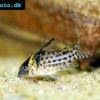 Agassizii’s
Agassizii’s  Spotted
Spotted  Skunk
Skunk  Corydoras
Corydoras 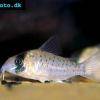 Fairy
Fairy  Corydoras
Corydoras  Pink
Pink 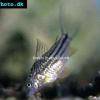 San
San  Bond’s
Bond’s  Spotted
Spotted  Tailspot
Tailspot  Concolor
Concolor  Cope’s
Cope’s 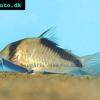 Sand’s
Sand’s  False
False  False
False 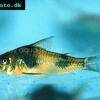 Ehrhardt’s
Ehrhardt’s  Elegant
Elegant 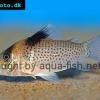 Saddle
Saddle  Fowler’s
Fowler’s  Gomezi
Gomezi 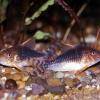 Palespotted
Palespotted 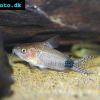 Guapore
Guapore  Dainty
Dainty  Mosaic
Mosaic  Imitator
Imitator  Julii
Julii  Leopard
Leopard 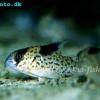 Black
Black  Slant-bar
Slant-bar  Bluespotted
Bluespotted  False
False  Bandit
Bandit  Mini
Mini 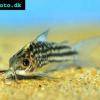 Napo
Napo  Corydoras
Corydoras 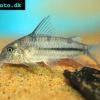 Blue
Blue  Nijssen’s
Nijssen’s 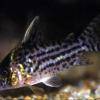 Ornate
Ornate  Peppered
Peppered  Panda
Panda  Albertini
Albertini  Pastaza
Pastaza  Corydoras
Corydoras  Many-spotted
Many-spotted  Dwarf
Dwarf  Iridescent
Iridescent  Reticulated
Reticulated 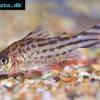 Bannertail
Bannertail  Robust
Robust  Schwartz’s
Schwartz’s  Black
Black 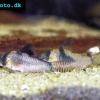 Longnosed
Longnosed  Seuss’
Seuss’  Smudge
Smudge  Masquerade
Masquerade 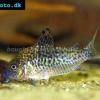 False
False  Millenium
Millenium  Pinkthroat
Pinkthroat  Sterba’s
Sterba’s  Longsnout
Longsnout  False
False  Miguelito
Miguelito 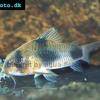 Twosaddle
Twosaddle  Xingu
Xingu 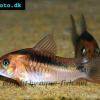 Black
Black  Porthole
Porthole  Flagtail
Flagtail  Brown
Brown  Spotted
Spotted